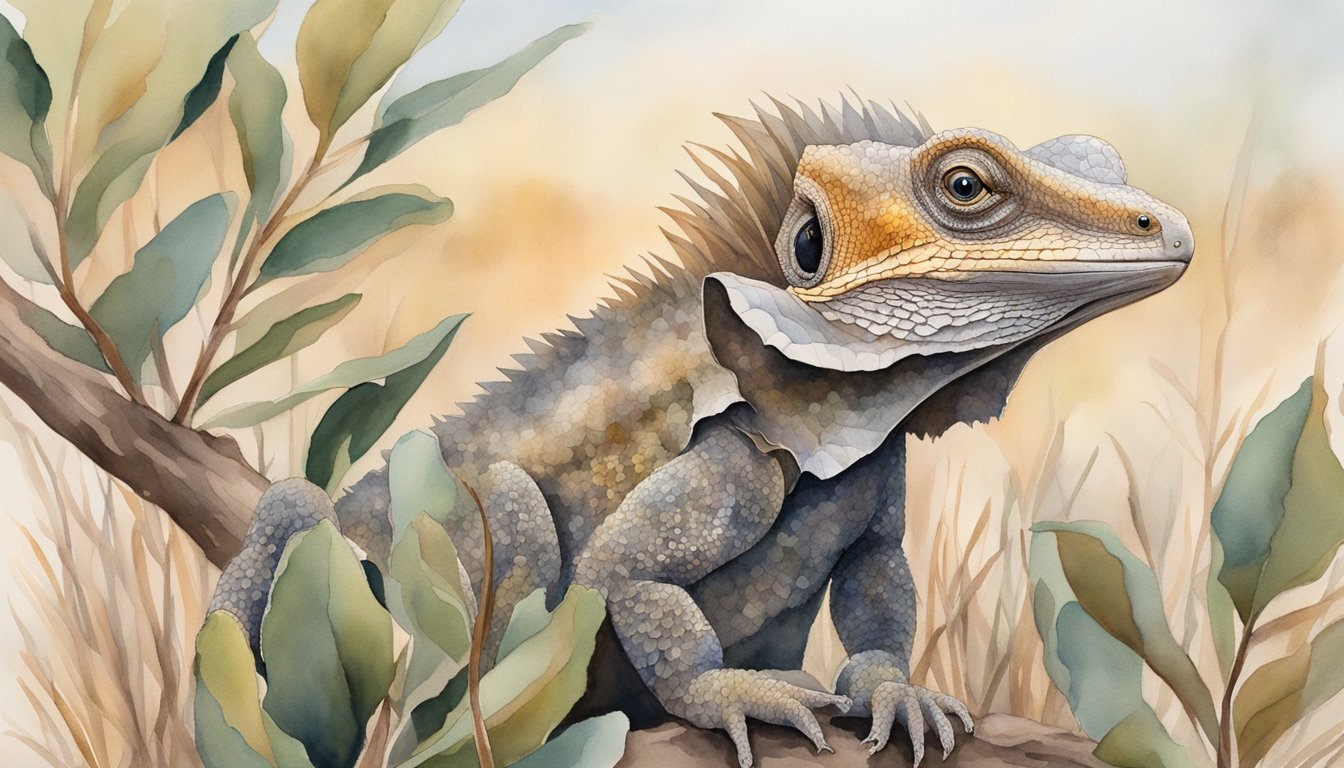Frilled Lizard Overview
The frilled lizard, scientifically known as Chlamydosaurus kingii, is a distinctive reptile that resides in the ecosystems of Northern Australia and New Guinea. This lizard is particularly known for the prominent frill around its neck, which is employed for both camouflage and defensive behavior.
Primarily arboreal, these lizards spend a significant amount of time in trees, descending to the floor mainly for feeding. They exhibit a unique bipedal locomotion, running on two legs to escape threats.
The size of a frilled lizard can be quite imposing, with a length of up to 90 cm, where two-thirds is just the tail. They maintain a moderate weight of up to 600 grams. Their color and scales provide a natural camouflage aligning with their woodland and forest habitats.
In terms of behavior, frilled lizards are diurnal, actively hunting during the day. They are known to be solitary creatures, with each maintaining its own territory.
Their conservation status, according to the IUCN, currently does not indicate they are threatened. However, preservation of their habitat is crucial for their ongoing sustainability.
For more information about their unique traits and habitat, explore National Geographic’s in-depth details on the Frilled Lizard. Additional fascinating facts can be found on Fact Animal’s feature on 7 Fun Frilled Lizard Facts. To delve into the scientific classification and behavior, Wikipedia offers a comprehensive summary of the Frilled Lizard.
Frilled Lizard Habitat and Lifestyle

The frilled lizard, known for its distinctive neck frill, exhibits unique behaviors in its natural environment. Found primarily in northern Australia and parts of New Guinea, these creatures have adapted to a versatile lifestyle within diverse habitats.
Diet and Predation
Frilled lizards primarily feed on invertebrates, such as insects, termites, spiders, beetles, cicadas, moths, and occasionally small mammals. They forage for food on the ground and in the trees, using their keen eyesight and quick movements to catch prey. Predators of the frilled lizard include birds of prey, feral cats, and larger lizards. When threatened, the frilled lizard can expand its large frill and open its mouth to appear more intimidating, a behavior that can deter potential predators.
Reproduction and Development
The mating season for frilled lizards usually occurs at the beginning of the wet season. After mating, females lay clutches of 8 to 23 eggs in a burrow on the ground. Incubation can last from two to three months. The hatchlings are independent from birth and must fend for themselves, including finding food and avoiding predators. Frilled lizards reach sexual maturity in about two years and can live up to ten years, though lifespan in the wild varies.
Environment and Adaptations
Frilled lizards inhabit woodlands and savannahs, thriving in both wet and dry seasons. They are proficient climbers and often reside in trees where they blend with the vegetation thanks to their gray and brown coloration. The ability to stay motionless aids in camouflage, but when flight is necessary, they can sprint surprisingly fast on their hind legs. This adaptation, along with their swimming ability, aids in both capturing prey and escaping threats. Their long tail and sharp claws help them to maintain balance and grip while climbing.

